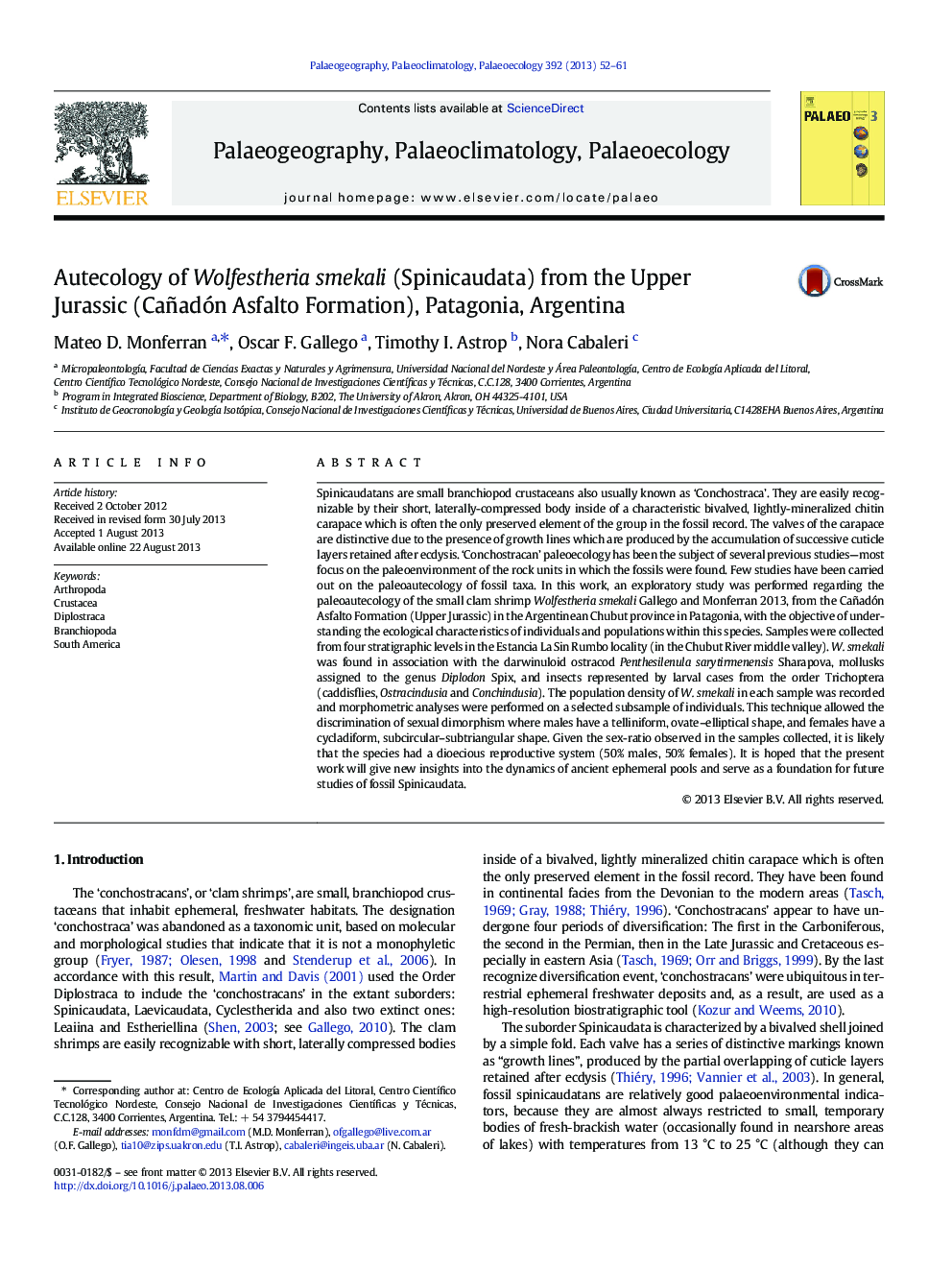| کد مقاله | کد نشریه | سال انتشار | مقاله انگلیسی | نسخه تمام متن |
|---|---|---|---|---|
| 4466427 | 1622198 | 2013 | 10 صفحه PDF | دانلود رایگان |

• The Cañadón Asfalto Formation has an important invertebrate Jurassic fossil fauna.
• The paleoecology of Wolfestheria smekali was studied using morphometric techniques.
• Wolfestheria smekali is small fossil clam shrimp that exhibits sexual dimorphism.
• Relationship between paleoenvironment and ‘conchostracans’ is stablished.
Spinicaudatans are small branchiopod crustaceans also usually known as ‘Conchostraca’. They are easily recognizable by their short, laterally-compressed body inside of a characteristic bivalved, lightly-mineralized chitin carapace which is often the only preserved element of the group in the fossil record. The valves of the carapace are distinctive due to the presence of growth lines which are produced by the accumulation of successive cuticle layers retained after ecdysis. ‘Conchostracan’ paleoecology has been the subject of several previous studies—most focus on the paleoenvironment of the rock units in which the fossils were found. Few studies have been carried out on the paleoautecology of fossil taxa. In this work, an exploratory study was performed regarding the paleoautecology of the small clam shrimp Wolfestheria smekali Gallego and Monferran 2013, from the Cañadón Asfalto Formation (Upper Jurassic) in the Argentinean Chubut province in Patagonia, with the objective of understanding the ecological characteristics of individuals and populations within this species. Samples were collected from four stratigraphic levels in the Estancia La Sin Rumbo locality (in the Chubut River middle valley). W. smekali was found in association with the darwinuloid ostracod Penthesilenula sarytirmenensis Sharapova, mollusks assigned to the genus Diplodon Spix, and insects represented by larval cases from the order Trichoptera (caddisflies, Ostracindusia and Conchindusia). The population density of W. smekali in each sample was recorded and morphometric analyses were performed on a selected subsample of individuals. This technique allowed the discrimination of sexual dimorphism where males have a telliniform, ovate–elliptical shape, and females have a cycladiform, subcircular–subtriangular shape. Given the sex-ratio observed in the samples collected, it is likely that the species had a dioecious reproductive system (50% males, 50% females). It is hoped that the present work will give new insights into the dynamics of ancient ephemeral pools and serve as a foundation for future studies of fossil Spinicaudata.
Journal: Palaeogeography, Palaeoclimatology, Palaeoecology - Volume 392, 15 December 2013, Pages 52–61